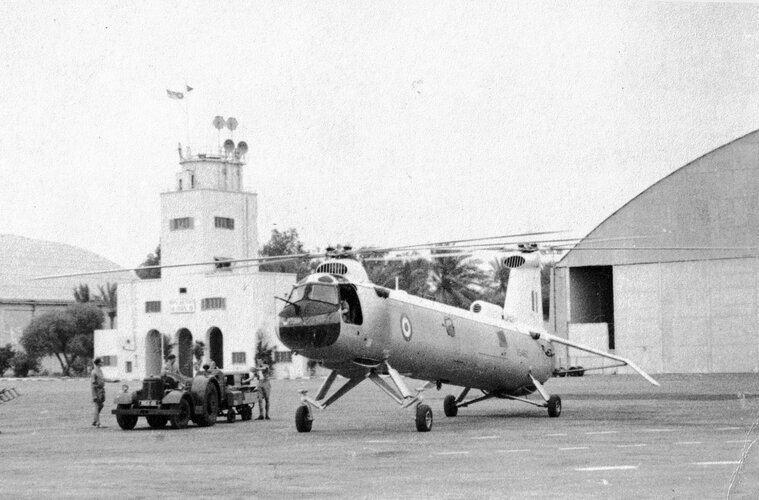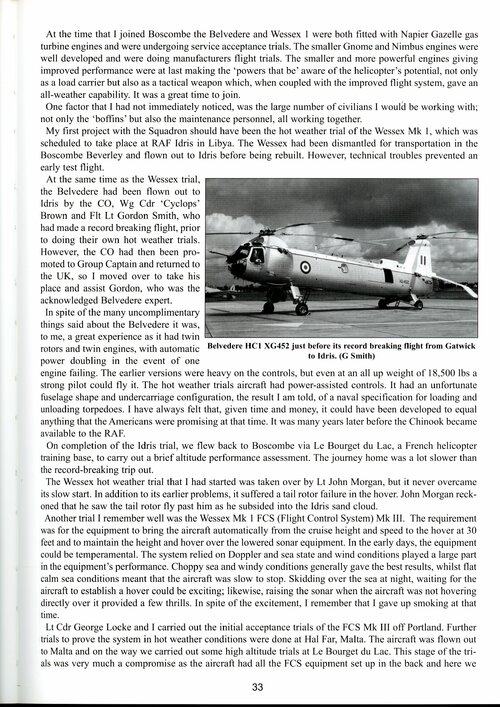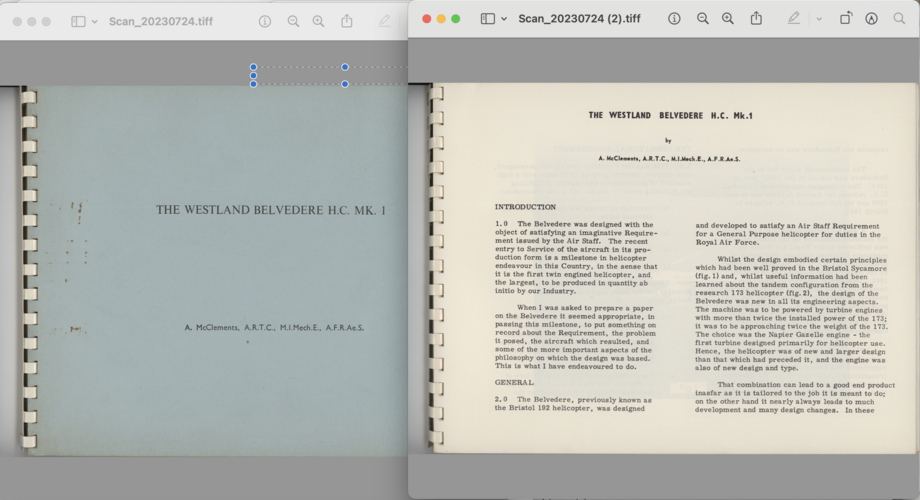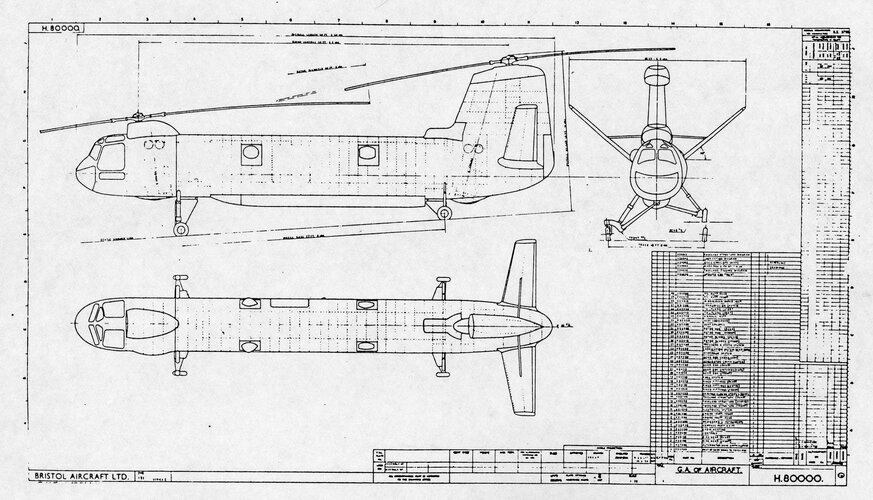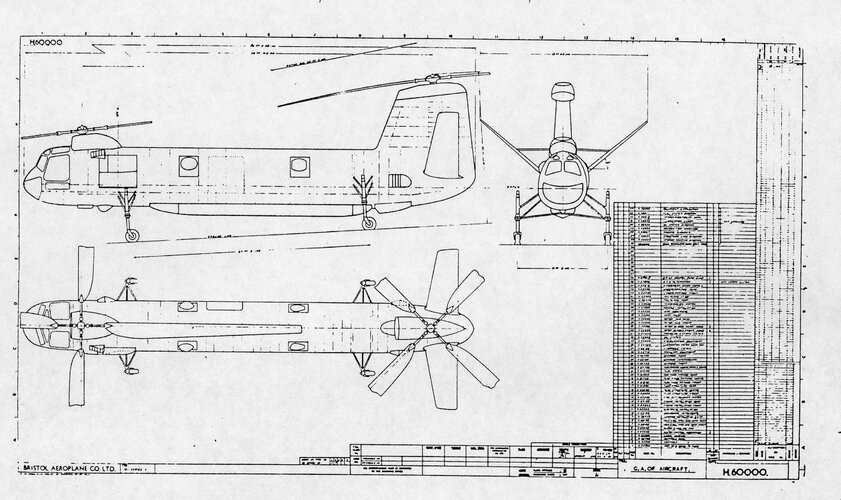This reminds me of a retirement speech from years ago, given by a chap who in his early employment, was crew chief working for Bristol Helicopters during the Belvedere development.
Unconnected with the following story, a former RAF Canberra pilot once told me concerning a night time wheels up landing “The crash was easy, over in a flash, didn’t feel a thing…it was being rescued that was the scary and painful bit”. I guess the story below illustrates what he meant.
Avpin, aka Isopropyl nitrate, is a mono propellant liquid that burns by itself in a very energetic manner, releasing a great quantity of gas and heat. It was used as an engine starter system in quite a few U.K. aircraft including the Belvedere. The problems in the early days was find a valve seat seal which would stop the flow when desired, it would leak into the hot exhaust where it would keep burning.
The solution was simple;- a ground based CO 2 fire extinguisher, with a 4m long tube that turns 90 degs at the top (to reach the exhaust on top of fuselage), known as a giraffe extinguisher. Avpin fires were so frequent in the early days and the extinguisher so effective they were just another day, pilots wouldn’t even leave the cockpit.
So our story begins with the Belvedere hot weather service trials combined with a sales campaign to Tehran in about 1961. A flight test Belvedere supported by a Bristol team is on the flight line one morning and the daily flying schedule gets off to a bad start with an Avpin exhaust duct fire, routinely put out, but emptying the extinguisher. They’ve only taken one special giraffe extinguisher so it’s dispatched for refill. The Avpin valve is reworked, and a second attempt at a flight scheduled for after lunch. By the time everyone’s ready for another try the CO2 extinguisher hasn’t been returned so the crew chief pops along to the airfield fire station to ask if they’ll position a fire engine next to the helicopter. They politely decline but offered to be on standby and being only a hundred meters away promise to be at the helo within a minute. One of the firemen would stand outside and if the crew chief give a sign (jumping up and down, waving arms) they would turn out.
And so the second test flight was authorised. Upon engine cranking there’s an Avpin fire, crew chief jumps up/down/waves arms, the chap in the fire station sees him and pulls the crash alarm. The crew chief watches in awe as within a few seconds three fire engines emerge driving in prefect line abreast from the station. All they’ve got to do is left hand turn towards the Helo on the hardstanding. The middle fire engine then turns left but the fire engine to his left doesn’t so there’s a solid crunch as they collide. These two stop, now locked together, the firemen dismount and start yelling at each other. The remaining fire engine avoids the other two, turns and safely arrives at the helo. The firemen get out, grab a ladder and unroll a fire hose, ignoring the crew chief as he shouts “CO2, CO2”.
By chance, a moment later the airfield commander happened to be driving past the scene and pulls up to have a look. He stops his car, gets out, instinctively locks the doors, hears lots of shouting up by the fire station and decides his people skills are far more useful up at the fire station, so trots off in that direction.
Back at the Helo the ladders been set up, firemen with hose is at the top, goes to turn water on and nothing comes out. A panic search finds the car parked on the hose. Meanwhile the crew chief has grabbed a CO2 extinguisher from the fire engine and was slowly climbing the ladder.
In the cockpit, initially it was nothing to worry about, just another Avpin fire, and they were blissfully unaware of the farce unfolding outside. All of sudden the cockpit filled with smoke as the exhaust duct significantly overheated. The Belvedere forward engine was in the fuselage, just behind the pilot so to get from the cockpit to the cargo area was a very narrow but short corridor. This was filled with smoke a dripping molten plastic so the normal exit route was blocked. Hence the pilots pulled back their side doors and jumped. The RAF project pilot landed badly and broke his wrist.
The crew chief was up the ladder, squirting CO2 into the exhaust duct and knocking down the fire (indeed saving the aircraft). it’s a noisy operation but above this he heard a bang. He turned around to see the firemen’s focus had been on moving the car. They’d tied a rope between it and the fire engine and the bang he’d heard was the cars bumper (fender) being ripped off.
Within approx 10 minutes of mayhem they broke;-
One Belvedere
One RAF project pilot
Two fire engines
One Car
And I think one fireman nose
He dryly concluded the hot and high trial was completed albeit late and they for some reason, didn’t get any sales.
I have no idea if this is as it happened, embellished, only repeating as I remember it being told.

